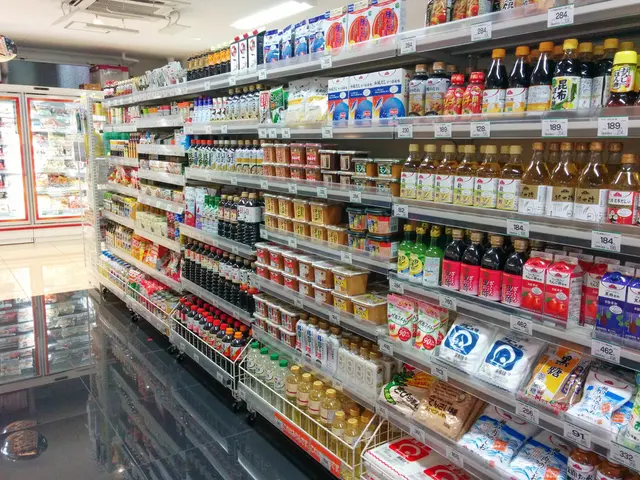Trump implements extensive tariffs, potentially causing hikes in prices for common household items
In 2025, President Donald Trump introduced a series of tariffs affecting various countries and sectors, with the aim of prioritising "fair and balanced trade" over efficiency. These tariffs have significant implications for prices and the average household.
The new tariffs increase the costs of consumer goods such as electronics, clothing, food, and automobiles. For instance, the new auto tariffs could add around $3,000 to the cost of U.S.-manufactured vehicles and up to $6,000 on Canadian or Mexican cars without exemptions. The increased costs from tariffs could lead to slower GDP growth, with estimates suggesting a 0.6% reduction in economic growth in 2025 and long-term losses between $80–110 billion annually.
The higher prices will disproportionately affect lower-income households, who spend a greater share of their income on imported goods. Some industries may see job gains (steel manufacturing), while others could face layoffs and reduced output due to higher import costs and supply chain disruptions.
The tariffs, which range from 10% to 41%, were applied to nearly 70 countries. Notably, India faces a 25% tariff, expected to climb to 50% on August 27. Other countries such as Canada, Brazil, Laos, Myanmar, Syria, and Russia also face tariffs, with Laos and Myanmar facing tariffs of 40% and 41% respectively.
The White House claims to have reached trade agreements with the United Kingdom, Vietnam, Indonesia, and a preliminary accord with China. However, the tariffs constitute a broad and substantial increase in trade barriers with many global partners, following a national security rationale.
The Yale Budget Lab found that the tariffs put forward by Trump are expected to cost an average household an additional $2,400 this year. The tariffs have been delayed initially set for August 1, for a third time.
President Trump posted on his social media platform that "billions of dollars in tariffs are now flowing into the United States of America!" The tariffs are part of a "new system of trade" that prioritises fairness over efficiency, according to a Trump administration official. White House press secretary Karoline Leavitt stated that the president and his trade team aim to cut the best deals for the American people and the American worker.
It is important to note that the rollout for goods shipped into the country by vessel has an extended deadline of October 5 to avoid the new tariff rates. The tariffs were expanded under Trump’s confrontational trade policy and include new levies of 15% tariffs on goods from Bolivia, Ecuador, Ghana, and Iceland.
Analysts warn these tariffs will raise costs for American consumers and businesses, leading to inflationary pressure and a cumulative increase in household expenses. The tariffs are expected to cost American households thousands of dollars annually in higher expenses and contribute to slower economic growth.
[1] Trade Policy Report
[2] CNN Business
[3] The Washington Post
[4] The New York Times
[5] Tax Foundation
The new tariffs have significant implications for the finance sector, as they could lead to slower GDP growth and long-term losses between $80–110 billion annually. These increased costs may affect the business community, with American consumers and households bearing the brunt of higher expenses, totaling an additional $2,400 for the average household this year.




